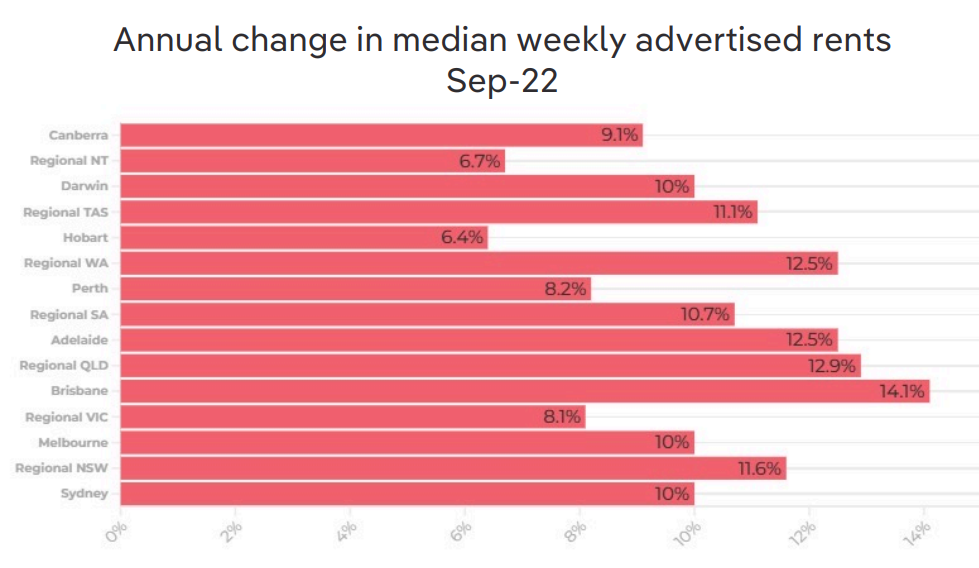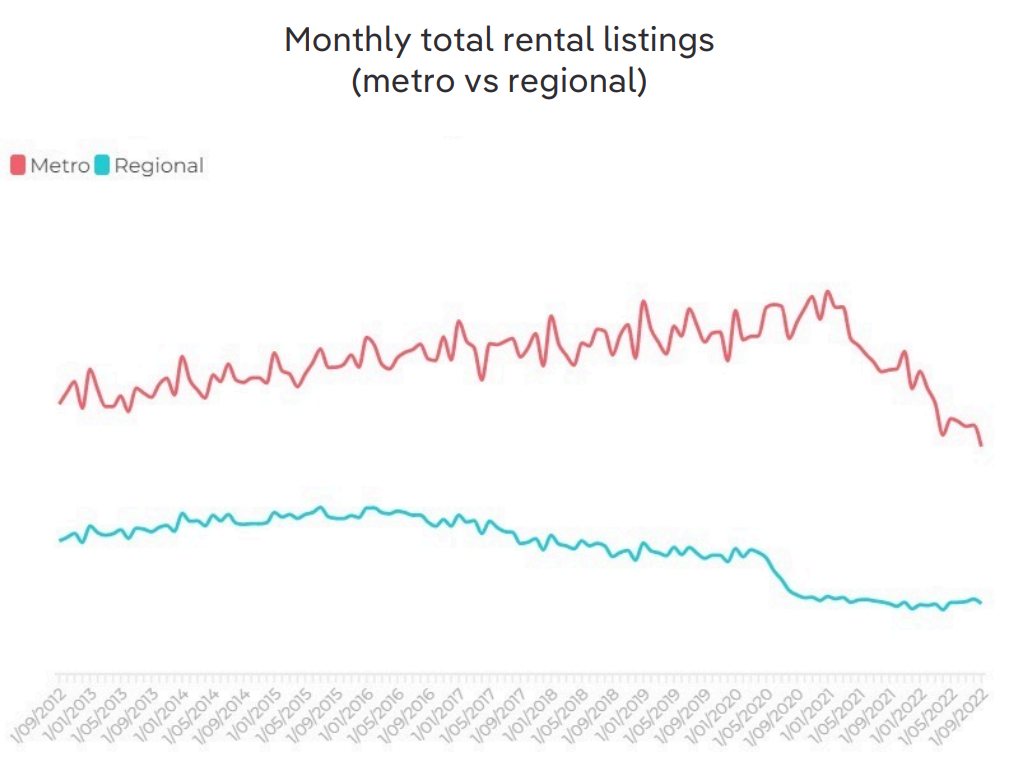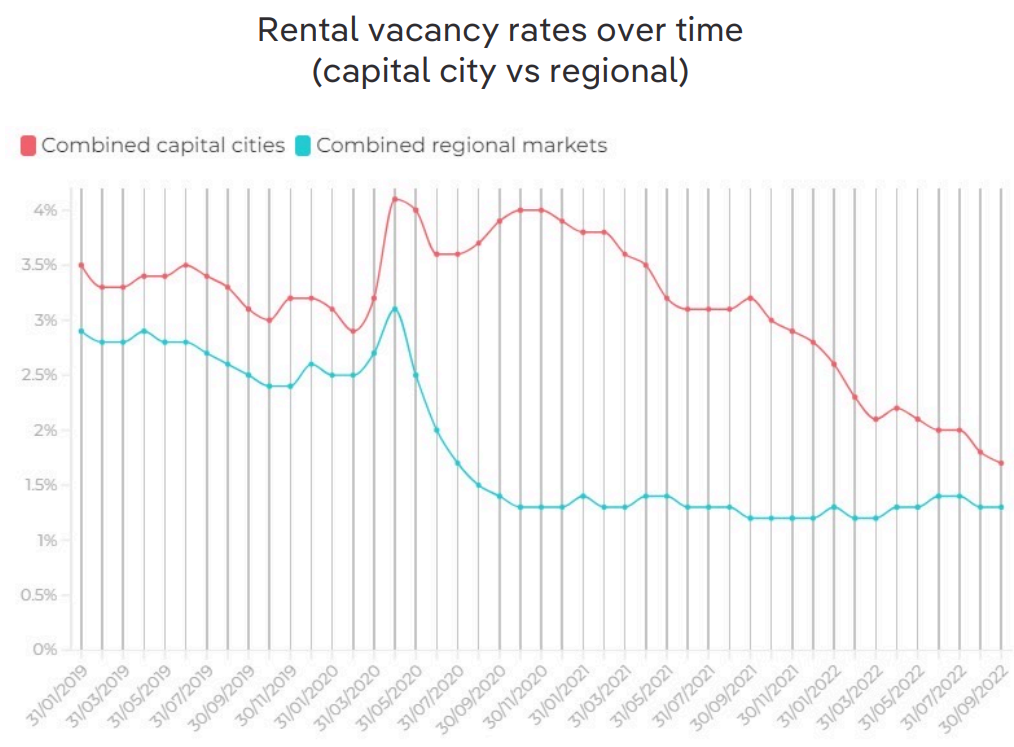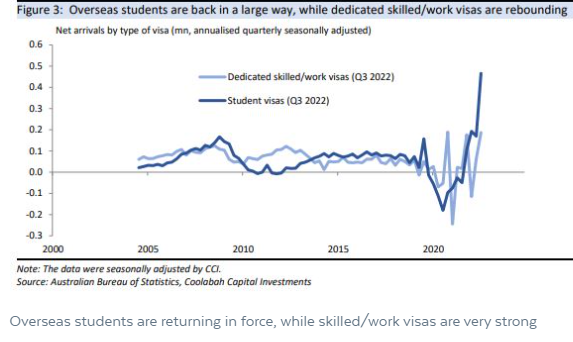PropTrack has released its September quarter Rental Report, which shows that Australia’s rental market continues to tighten and rents soar amid the rapid return of international students and migrants.
Median weekly advertised rents increased by 4.3% over the September 2022 quarter to be 10.3% higher year-on-year, which is the strongest growth witnessed over the past seven years.
The most notable trend over the quarter has been the strength of unit rental growth in Sydney and Melbourne, with advertised prices rising by 4% and 5% respectively.

The number of new rental listings continued to trend lower in September 2022, with new listings down 10.4% month-on-month and 7.1% year-on-year. New rental listings were 21% below the decade average in September 2022.
In a similar vein, the total number of properties advertised for rent on realestate.com.au fell by 8% month-on-month in September 2022 to be 20.5% lower year-on-year. Rental listing volumes were the lowest they’ve been since mid-2003 and were 32.5% below their decade average.

Meanwhile, the national rental vacancy rate was a record low 1.6% in September 2022. The house rental vacancy rate sat at 1.1%, slightly above its historic low. Whereas the unit rental vacancy rate was 2.5%, a record-low:

PropTrack expects the rental market to continue to tighten as migrants flood into Australia:
With a very tight rental market persisting and migration to Australia lifting, it appears that here will be no imminent easing of rental market pressures…
Our two biggest rental markets – Sydney and Melbourne – are seeing people that left during the pandemic return. In addition, most overseas migrants to Australia settle in these cities. These factors are likely to keep demand for rentals heightened, while supply of rentals is expected to continue to recede…
While there is some supply coming via build-to-rent, any additions are likely to be well and truly outweighed by the increase in demand from the re-opening of international borders and the ongoing decline in purchasing by first-home buyers…
None of these factors appear set to change in the near term, which means a further tightening of rental supply and increases in rental costs seems likely.
Tuesday’s federal budget forecast that 470,000 net overseas migrants will arrive in Australia in the two years to 2023-24:

As I explained yesterday, this net overseas migration forecast is significantly understated given the Albanese Government is actively attempting to lift permanent and temporary migration to record levels, and record numbers of students are already arriving in Australia:

Regardless, where will the hundreds of thousands of migrants live when there is already a chronic shortage of rental homes for the existing population? In tents? On the streets?
The Albanese Government’s mass immigration policy is an inequality disaster in the making.

